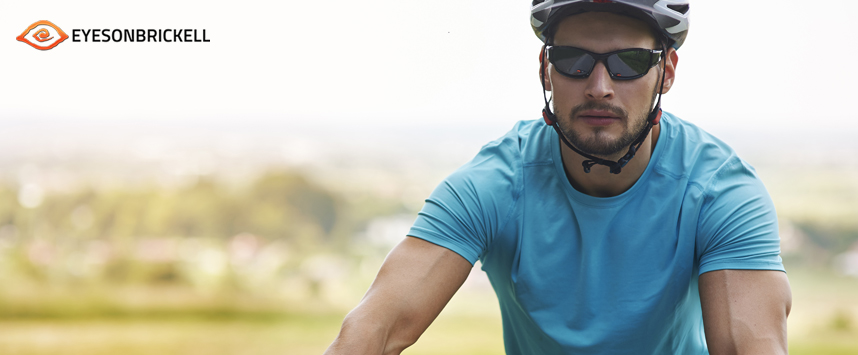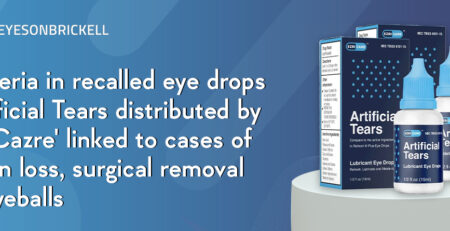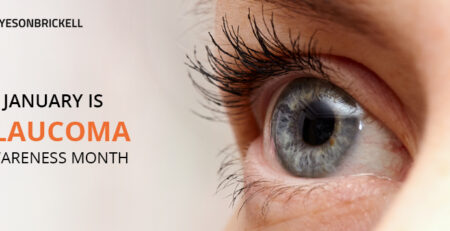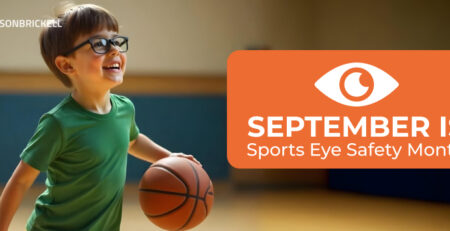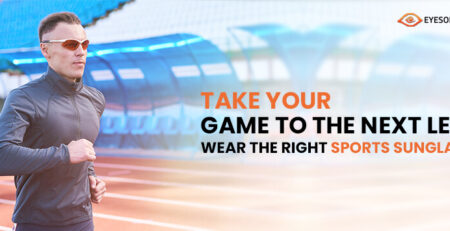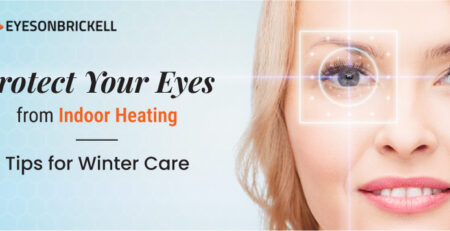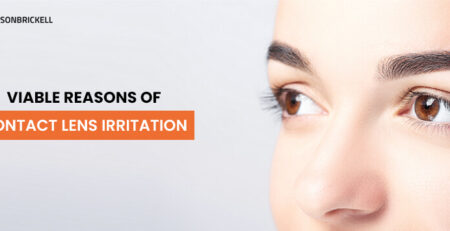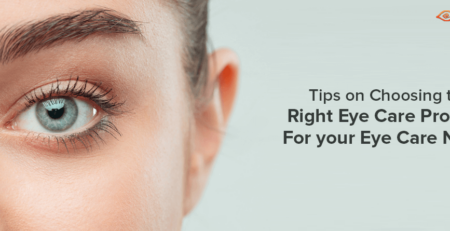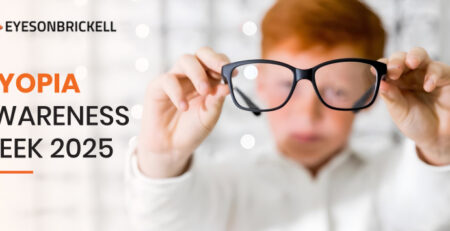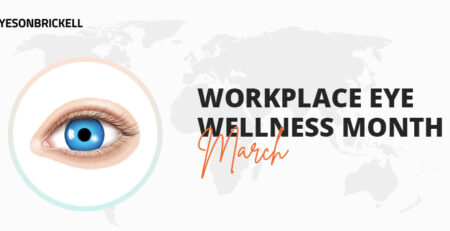Play It Safe: Expert Tips For Preventing Sports-Related Eye Injuries!
April Is Sports Eye Safety Month!
Did you know that approximately 30,000 Americans end up in the emergency room each year due to sports-related eye injuries? Basketball stands out for its high incidence of eye injuries, mainly due to the risk of finger pokes, resulting in approximately 6,000 cases each year. Although injuries resulting from sports might be severe, most of them are preventable. Protective eyewear and safety measures can prevent 90% of sports-related eye injuries. Furthermore, they allow you to enjoy your favorite sports and recreational activities.
As a leading eye clinic in Miami, Eyes on Brickell cares about your eye health. We’re always ready to offer expert guidance on keeping your eyes or vision safe while participating in sports or other activities. In addition to meeting your vision care needs, we want to inform you of little things that can improve your eyesight.
Sports That Are More Likely to Cause Eye Injuries
Many sports carry a risk of eye injuries, but some are considered higher risk due to the nature of the game. That is why we have divided these sports into the following three categories:
High-Risk Sports
- Guns, including air, gas, spring, and BB
- Basketball
- Cycling
- Baseball and Softball
- Lacrosse and Hockey (Field and Ice)
- Cricket
- Racquet Sports such as Tennis, Squash
- Boxing, Martial Arts, and Full-Contact Sports
Moderate Risk Sports
- Soccer/Football
- Badminton
- Volleyball
- Water Sports like water polo, diving, or fishing
- Golf
Low-Risk Sports
- Snow Sports, such as skiing or snowboarding
- Health club (exercise/weight lifting)
- Ball sports (unspecified)
- Non Contact martial arts
- Wrestling
- Bicycling
- All-terrain vehicles (4 wheels)
- Scooters, skateboards, and go-carts
- Swings or swing sets
Causes of Eye Injuries in Sports
The leading causes of eye injuries in sports can be broken down into three categories:
- Flying Objects: Flying objects are a common culprit across many sports. Balls, projectiles, equipment, or other players’ limbs can fly at your face during play. These objects can strike the eye directly, causing everything from scratches (corneal abrasions) to punctures and even detached retinas.
- Blunt Force Trauma: Blunt force trauma is a direct blow to the eye or the area around it. Collisions with other players, falls, or getting hit with sports equipment can cause blunt-force trauma. The severity of the injury depends on the force of the impact. It can range from a black eye (bruised eyelid) to more severe injuries like orbital blowout fractures (broken bones around the eye).
- UV Rays: This might be surprising, but unprotected exposure to ultraviolet rays from the sun can damage your eyes over time. This is especially true for outdoor sports like swimming, baseball, or skiing, where there’s a lot of sun exposure. Long-term UV damage can contribute to cataracts and macular degeneration, affecting vision.
Most Common Sports-Related Eye Injuries
The most common sports-related eye injuries can be categorized into two main types:
- Injuries from Physical Impact
- Injuries from Other Factors
Injuries from Physical Impact
The injuries from physical impacts are caused by a direct hit to the eye or nearby eye area. Here is the list of common eye injuries in sports that are caused by physical impact:
- Corneal Abrasions: Often called scratches on the cornea, these are caused by contact with a foreign object like a fingernail, a ball, or equipment. Symptoms include pain, light sensitivity, and watering.
- Blunt Force Trauma: This can range from a black eye or bruised eyelid to more severe injuries like orbital blowout fractures or broken bones around the eye. The severity depends on the force of the impact. It can cause pain, swelling, double vision, and vision loss.
- Hyphema: Bleeding in the eye’s front chamber, most commonly caused by a forceful blow to the eye with a ball or object. Symptoms include blurred vision, redness in the eye, and pain.
- Detached Retina: This is a severe injury in which the eye’s light-sensitive layer separates from the underlying tissue. It can be caused by a strong blow to the head or eye and, if not treated promptly, can lead to permanent vision loss.
Injuries from Other Factors
These are not caused by direct impact but can still damage the eyes. The following injuries fall under this category:
- Foreign Object in the Eye: It can happen in many sports and can be very painful and irritating. Symptoms include pain, watering, and redness.
- Sunburn of the Cornea (Photokeratitis): Photokeratitis is caused by sun exposure to ultraviolet (UV) rays, particularly during outdoor sports. Symptoms include pain, light sensitivity, and watering.
Tips To Prevent Eye Injuries in Sports
Sports-related eye injuries are common, but they can be prevented without hassle. All you need to do is be aware of the sports eye safety precautions and follow them to avoid eye injuries during sports. Here is what you can do to protect yourself from the common eye injuries in sports:
-
Use Protective Eyewear
-
Avoid Prescription Glasses While Activities
-
Wear Helmets And Face Shields
-
Ensure Sun Protection
Wearing protective eyewear is essential to preventing sports eye injuries. According to the National Library of Medicine, 90% of eye injuries during sports can be prevented using the appropriate eyewear. Athletes should wear eyewear that meets the American Society for Testing Materials (ASTM) standards to ensure eye safety while playing.
When choosing eyewear, make sure it meets ASTM standards. Oakley’s 0OO9211 and 0OO9454A EVZERO BLADES (A) are great options for playing sports, as they have polycarbonate lenses approved by ASTM to protect against severe impact.
Prescription sunglasses and occupational safety glasses are made for specific tasks. They cannot protect your eyes from injuries while playing sports. In some cases, prescriptions can cause additional risks. For example, a broken lens can shatter and scratch the eye. That is why instead of wearing spectacles while playing, use ASTM-approved eyewear for eye protection.
Athletes must wear polycarbonate face masks or wire shields approved by their sports rules in football, lacrosse, and hockey. They should also wear protective eyewear, helmets, and shields to prevent eye injuries since shields don’t fully protect against scratches or pokes from equipment or fingers.
It’s essential to be aware that prolonged exposure to the sun can cause various eye conditions, such as photokeratitis, pinguecula, pterygium, and cataracts. Eye care specialists, like Dr. Antonie Copty, recommend wearing hats and UV-blocking sunglasses to prevent these eye issues. Seeking or creating shade can also help protect your eyes from sun-related injuries.
What to Do if You’ve Injured Your Eye?
If you experience sports-related eye injuries, here are the immediate steps you should take:
Minimize Further Damage
- Stop Playing Immediately: The most important thing is to stop playing and avoid further activities that could worsen the injury.
- Don’t Rub Your Eye: Rubbing can irritate the injury and cause more damage.
Protect the Eye
- Cover the Eye: If possible, gently cover the injured eye with a clean gauze pad or a clean cloth to shield it from further contact or irritation.
- Eye Shield: A rigid eye shield might be available in some cases. This can be especially helpful for injuries involving potential punctures or cuts. To improvise a shield, tape the bottom of a clean paper cup around the bony socket of the eye (not directly on the eyeball).
Seek Medical Attention
- Doctor or Emergency Room: Depending on the severity of the injury, it’s crucial to seek medical attention from a doctor or emergency room as soon as possible.
- Don’t Delay: It is crucial to detect eye injuries early and begin with the necessary treatment to prevent complications and ensure an effective healing process. Therefore, if you are experiencing discomfort or have doubts regarding your eye health, we recommend you schedule an eye examination at Eyes on Brickell in Miami without delay. Our team of experts can provide you with the proper guidance and care for your eye health needs.
Make An Appointment With Eyes on Brickell!
To Prevent sports-related eye injuries, it is essential to protect your eyes while playing sports. Wearing protective eyewear, avoiding prescription glasses, and using helmets and face shields can significantly reduce the risk of eye injuries. You should also ensure proper sun protection.
At Eyes on Brickell in Miami, we are committed to helping you keep your eyes safe while playing your favorite sports. Book an appointment with us if you are concerned about your eye health or seek advice on protective eyewear. Remember, your vision is precious, so protect it and enjoy your sports without any worries.
